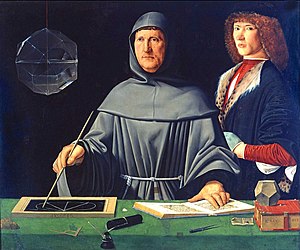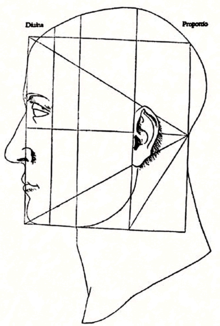Luca Pacioli

Fra Luca Bartolomeo de Pacioli (sometimes Paciolo) (1445–1514) was an Italian mathematician and Franciscan friar. He was also called Luca di Borgo after his birthplace, Borgo San Sepolcro, Tuscany.
Luca Pacioli studied in Venice and Rome and became a Franciscan friar in the 1470s. He was a travelling mathematics teacher until 1497, when he accepted an invitation by Lodovico Sforza to work in Milan. There he collaborated with Leonardo da Vinci. Pacioli published several works on mathematics, including:
- Summa de arithmetica, geometrica, proportioni et proportionalita (Venice 1494), a synthesis of the mathematical knowledge of his time.
- Geometry (1509), a Latin translation of Euclid.
- Divina proportione (Venice 1509), a work on mathematical and artistic proportion.
Summa de arithmetica... included the first published description of the Venetian method of keeping accounts, known as Double-entry book-keeping. For this accomplishment, Luca Pacioli is widely regarded as the "Father of Accounting".
Leonardo da Vinci drew the illustrations of the regular solids published in Divina proportione while he lived with and took mathematics lessons from Pacioli. The work discusses the mathematics of the golden ratio and its application in architecture. Da Vinci's drawings are probably the first illustrations of skeletonic solids which allowed an easy distinction between front and back. The work also discusses the use of perspective by painters such as Piero della Francesca, Melozzo da Forlì and Marco Palmezzano.
Quote

The Ancients, having taken into consideration the rigorous construction of the human body, elaborated all their works, as especially their holy temples, according to these proportions; for they found here the two principal figures without which no project is possible: the perfection of the circle, the principle of all regular bodies, and the equilateral square.
from "Divina Proportione"

References
- Pacioli, Luca. Divina Proportione, Luca Paganinem de Paganinus de Brescia (Antonio Capella) 1509, Venice
- Taylor, Emmet, R. No Royal Road: Luca Pacioli and his Times (1942)
